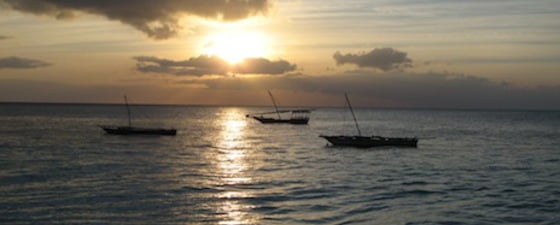The emergence of East Africa as a petroleum province has been spotted by the media, especially the UK press where a headline such as ‘Improved technology helps to oil the wheels for East Africa’ (The Times, 7th January 2012) is but one of many.
As a recent Finding Petroleum Forum revealed, it is certainly true that improved technology has had an impact, whether through satellite imagery, aero-magnetics, gravity gradiometry or plate tectonic modelling. The likelihood of oil, however, and where it may be located, as well as whether the gas that has been discovered is commercial, requires more careful thought.
If we go back let’s say 10 years, East Africa was completely disregarded by petroleum explorers. Only a handful of wells had been drilled. There was not very much data but source rocks were generally believed to be absent or poor; the prevailing view was that there would only be small amounts of gas, if anything.
Actually, it appears that this was based on ‘Myths, Myopia, Misinformation’, as pointed out by Chris Matchette-Downes in GeoExpro, Vol. 4, No. 5. In particular, he identified evidence for contiguous source rocks, for example in the Early and Mid-Jurassic, which could be in the oil window offshore. And of course, persistent seeps were known both offshore and in the lakes of the East African Rift System.
Since 2008, there has been significantly more exploration activity and new well results are being announced all the time, but the essence is still the same: oil has been discovered onshore in the Albertine Graben of Uganda and very recently in Kenya (see Hot Spot, page 98). Large amounts of gas have been discovered offshore – in both Mozambique and Tanzania – but no oil as yet.
Significant Gas Volumes
 What has been proposed so far offshore is that the youngest source rock is an Early/Mid-Jurassic marine shale, and so one model suggests that this may have been buried under more sediment than previously anticipated and is now in the gas window. However, this source rock has not been sampled and an alternative explanation is that the gas derives from an area of this rock that has had high terrigenous input and so is gas prone.
What has been proposed so far offshore is that the youngest source rock is an Early/Mid-Jurassic marine shale, and so one model suggests that this may have been buried under more sediment than previously anticipated and is now in the gas window. However, this source rock has not been sampled and an alternative explanation is that the gas derives from an area of this rock that has had high terrigenous input and so is gas prone.
The gas volumes discovered in both Mozambique and Tanzania are significant and as a distant observer one’s immediate response is to think that they are both candidates for LNG schemes. However, as Monica Enfield of Energy Intelligence pointed out in her Finding Petroleum presentation1, this perspective ignores the focus that both host governments will have on domestic issues, such as creating a local market and providing employment in the relatively short term.
As Bernstein Research has noted, a combination of successes – for example shale gas onshore in the USA, and conventional gas in the Eastern Mediterranean and on the North West Shelf of Australia – has led to there being a large number of global LNG opportunities for gas to be sent to fuel the markets of either Europe or South East Asia. This may mean that somewhat more costly East African LNG will have to wait its turn in the queue. Whilst the Majors may be content to ‘bank’ gas for the longer term, ready for the day the price rises and it is needed, this may not at all be in line with the hopes and expectations of the governments of Tanzania and Mozambique.
The attraction of oil offshore East Africa would be that the global price is probably going to remain high and that a discovery of a few hundred million barrels can be developed fairly rapidly with an FPSO and shuttle tankerage – indeed many tankers pass this way as they go around the Cape of Good Hope.
Where is the Oil?
So where might there be oil offshore? Explorers now have vast amounts of data – from satellites, airborne surveys, field geologists, seabed cores, national repositories, the huge number of wells drilled – over 200,000 ‘wild cats’ alone since 1965 – and publications. They will need to sift through all of these to identify basins and plays which might work or, in the question I have just posed, might work in a particular way.
The ability of explorers to spot the next big play depends on their ability to deal with this veritable Niagara Falls of data, to solve what some have referred to as the ‘Big Data’2 problem – or, perhaps, opportunity is the better word?
Deploying a deep understanding of plate tectonics and chronostratigraphy – understanding what gets deposited where and when – is the key process by which this is achieved, whereby opportunity is accessed.
It is just my opinion but we explorers may be guilty of laziness, believing – or at least giving the impression of believing – that offshore exploration nowadays simply consists of dropping in a regional/exploration 3D seismic survey and then ‘no dry holes’ will result. This is far from the truth!
Acknowledgements:
I am grateful to Alastair Bee at Richmond Energy Partners, Chris Matchette-Downes at MDOil and Oswald Clint & Robert West at Bernstein Research for helping me summarise the current status.
References:
1. Finding Petroleum Forum, 17th April 2012
2. http://www.findingpetroleum.com/video/385.aspx





